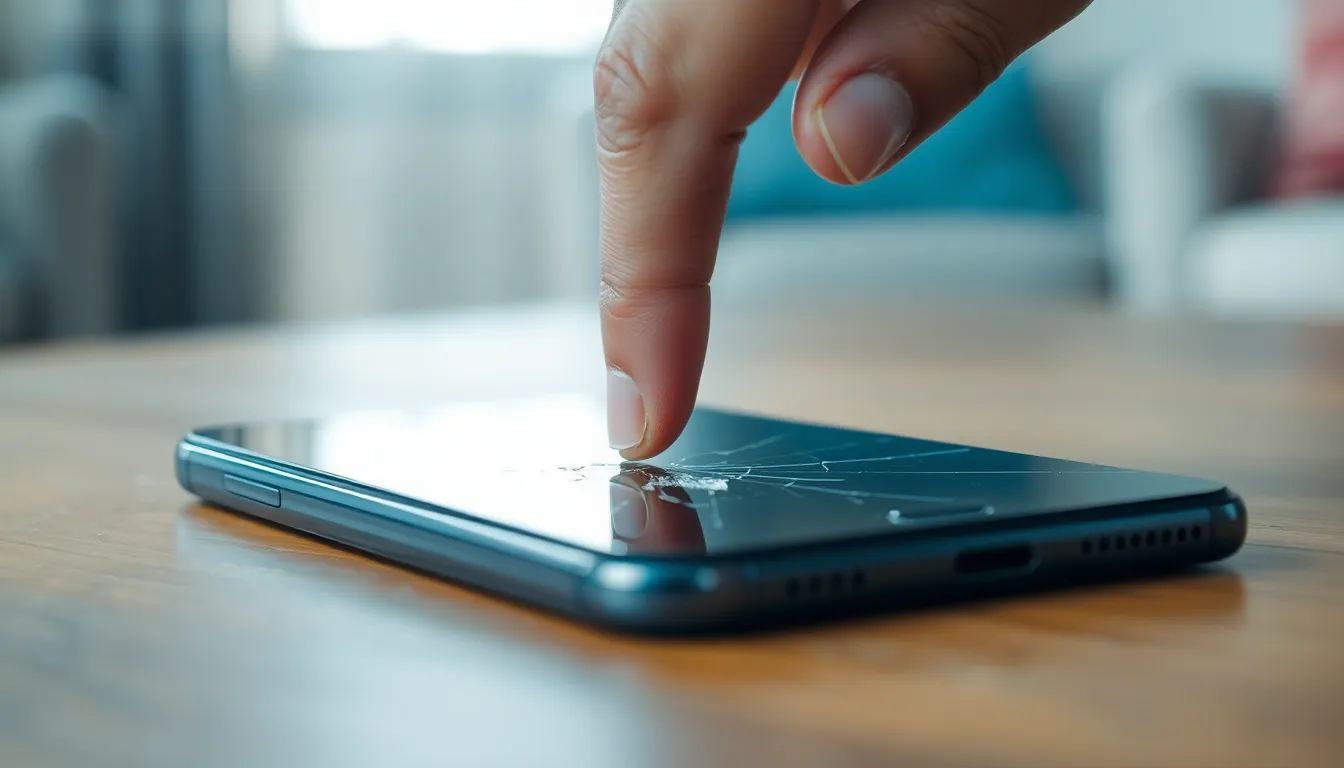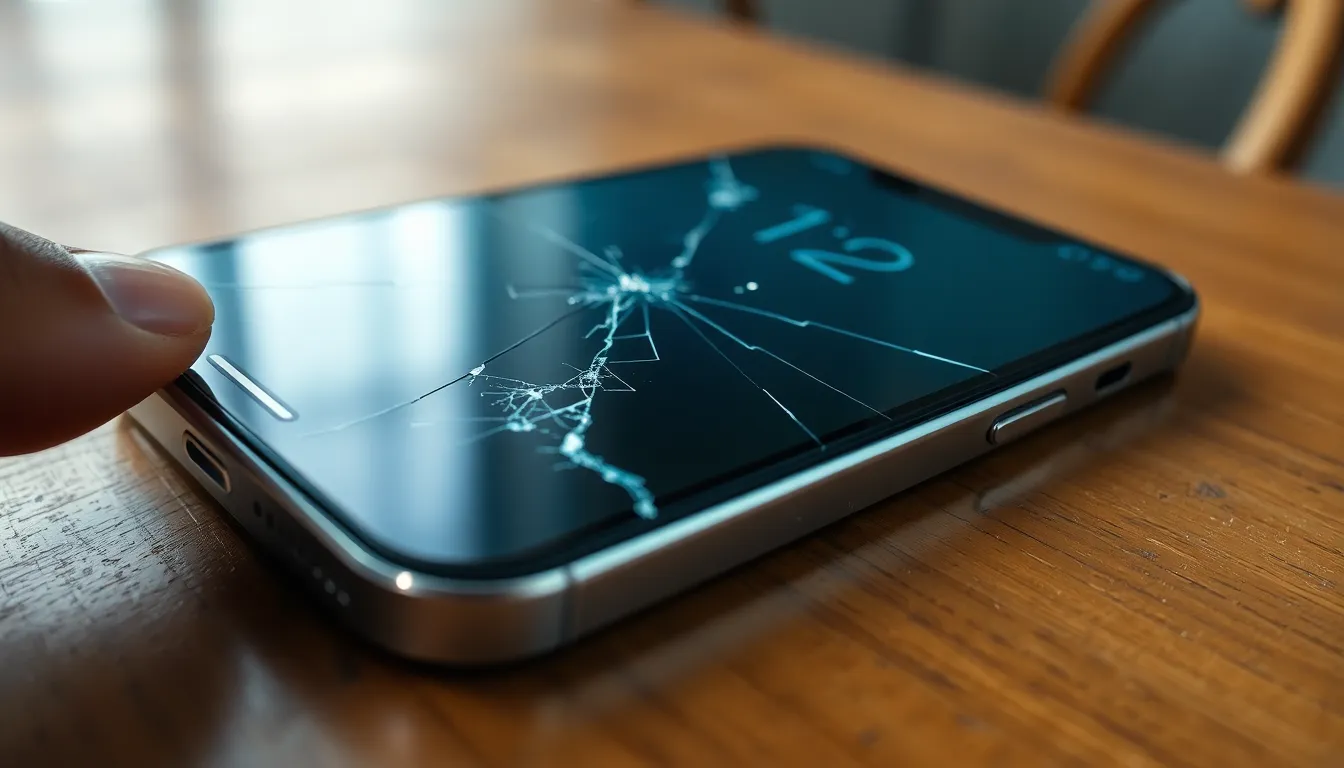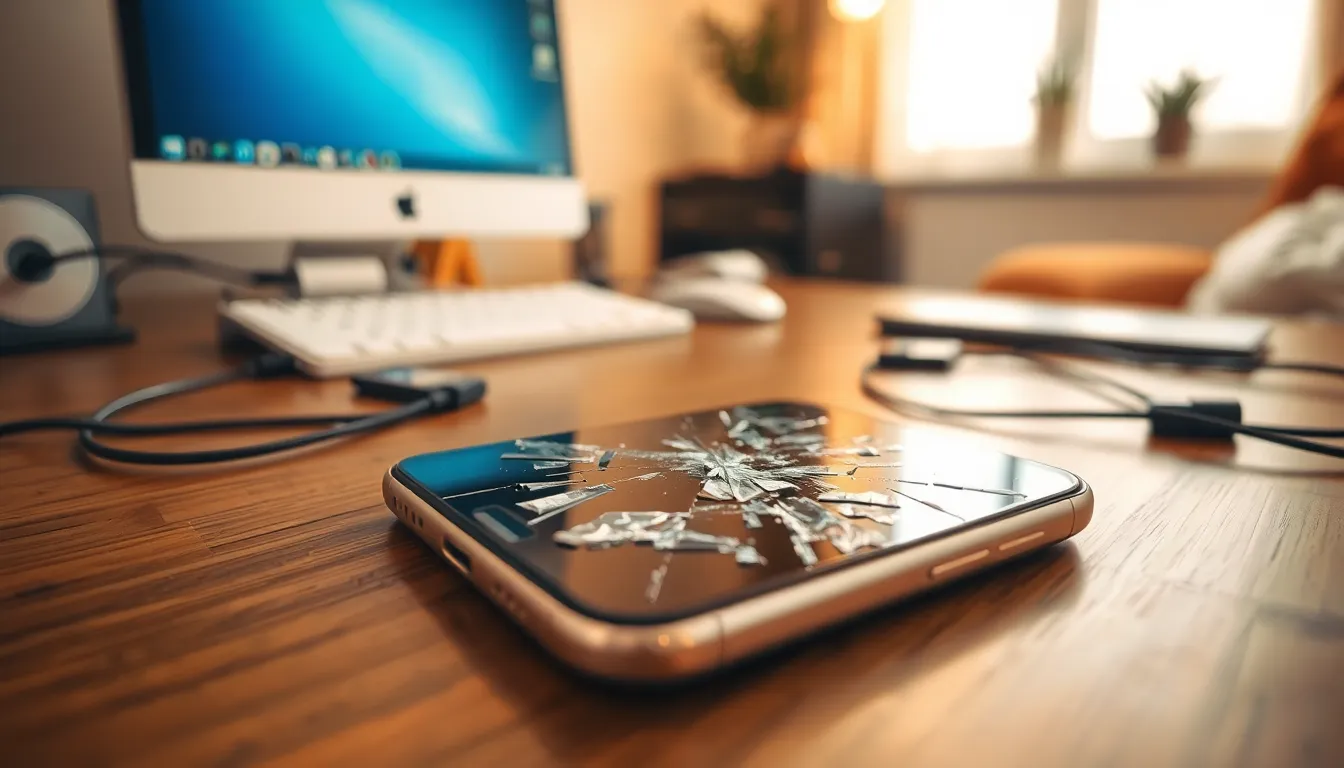Imagine this: your iPhone’s screen is shattered, and you’re left staring at a digital puzzle that’s impossible to solve. Panic sets in as you think about all those cherished photos, important contacts, and that one meme that always makes you laugh. But don’t worry! Just because your screen’s on the fritz doesn’t mean your data is lost forever.
Table of Contents
ToggleUnderstanding the Problem
A broken screen on an iPhone raises concerns about data accessibility. Losing access to photos, contacts, and other valuable information can be stressful. Users often feel helpless when a shattered display prevents them from utilizing their devices. This situation prompts the need for effective solutions.
Assessing the degree of the screen damage is crucial. If the phone still responds to touch input, users might transfer data despite the visual impairment. However, a completely unresponsive screen complicates the process. Seeking alternatives becomes necessary when the phone displays no visuals at all.
Hardware issues may arise, such as malfunctioning display connectors. These problems can lead to difficulties in data access. Recognizing that data might remain intact but inaccessible is essential.
Exploring various transfer methods and tools can provide solutions. Different techniques enable recovery even with significant screen damage. Some applications, such as iTunes or iCloud, offer direct data backups. Third-party software can also facilitate data retrieval through computer connections.
Users must consider their comfort level with technology. Familiarity with these methods impacts the choice of data transfer strategies. Evaluating individual comfort will guide decisions in accessing important files from a broken iPhone. By understanding the underlying issues related to the damaged screen, users can approach data recovery with informed strategies.
Assessing the Damage


Assessing the damage is crucial to determine the best method for data recovery. Understanding the extent of the screen’s impairment can simplify the process.
Identifying the Screen Condition
Examine the screen visually for cracks or discoloration. A cracked display may still respond to touches, which is beneficial for data transfer. On the other hand, if the screen is completely black or there’s no visual output, that complicates access to files. Users should also check if any portions of the screen remain responsive. Notably, a functional touchscreen suggests that data transfer might be achievable, even with visible damage. Improving clarity on the screen condition directly influences the recovery strategy.
Checking Device Functionality
Test the device’s response to various actions. Pressing the home button or power button can reveal whether the phone powers on. Responding sounds or vibrations indicate the device might still function. Connecting the iPhone to a computer can also provide insight into its status. If the computer recognizes the phone, data transfer options remain viable. Conversely, if the device fails to power up or respond at all, recovery efforts face significant challenges. Establishing the functionality aids in determining appropriate next steps.
Data Transfer Methods
Users can transfer data from an iPhone with a broken screen through various methods, ensuring access to important files and information. Understanding available options simplifies the recovery process.
Using iTunes for Data Transfer
Transferring data via iTunes remains a reliable option for users. Connect the iPhone to a computer using a USB cable. If the computer recognizes the device, users can create a backup through iTunes. Backups include data such as contacts, messages, and photos, allowing users to restore this information on a new device. It is essential to ensure the iPhone is unlocked, as a locked screen complicates access. Users familiar with iTunes may find this method straightforward and effective.
Using iCloud for Backup and Restore
Utilizing iCloud provides a cloud-based solution for backing up data. Users must attempt to access the settings, if possible, to enable iCloud backups on the functional parts of the screen. If iCloud was previously set up, backups may occur automatically, preserving contacts, photos, and more. Once the data is safe in iCloud, restoring it becomes easy on a new or repaired device. Users can log in to iCloud on their new device and choose what to restore, streamlining data recovery.
Third-Party Software Solutions
Exploring third-party software offers additional avenues for data recovery. Several applications specialize in retrieving files from iPhones, even those with damaged screens. Users can download such software on their computers, connecting the damaged iPhone to initiate scans for recoverable data. Each program varies in features, so selecting one that matches specific needs proves beneficial. This option provides a way to access photos, messages, and contacts, making it an excellent choice for those unable to use iTunes or iCloud.
Safety Precautions
Taking appropriate safety precautions ensures successful data transfer from an iPhone with a broken screen. Users must prioritize both data privacy and device integrity during the process.
Ensuring Data Privacy
Protecting personal information is essential when dealing with a damaged device. Users must avoid connecting to unsecured Wi-Fi networks that could expose sensitive data. Enabling two-factor authentication adds an extra layer of security when accessing cloud services. It also helps to create strong passwords for accounts tied to stored data. Users should consider encrypting backups, whether on iTunes or iCloud, to keep information safe. Regularly reviewing privacy settings on accounts prevents unauthorized access. Remaining aware of suspicious activities can help catch potential breaches early.
Avoiding Further Damage
Safeguarding the iPhone from additional harm is crucial during data recovery attempts. Users should avoid excessive pressure on the broken screen while handling the device. Keeping the iPhone in a protective case can prevent additional drops or scratches. It’s wise to refrain from attempting DIY repairs that might worsen the screen condition. If the screen shows more severe damage, professional help should be sought without delay. Moreover, turning off the device immediately when any unusual signs occur prevents further complications. Handling the iPhone gently aids in preserving its condition, making data transfer more feasible.





